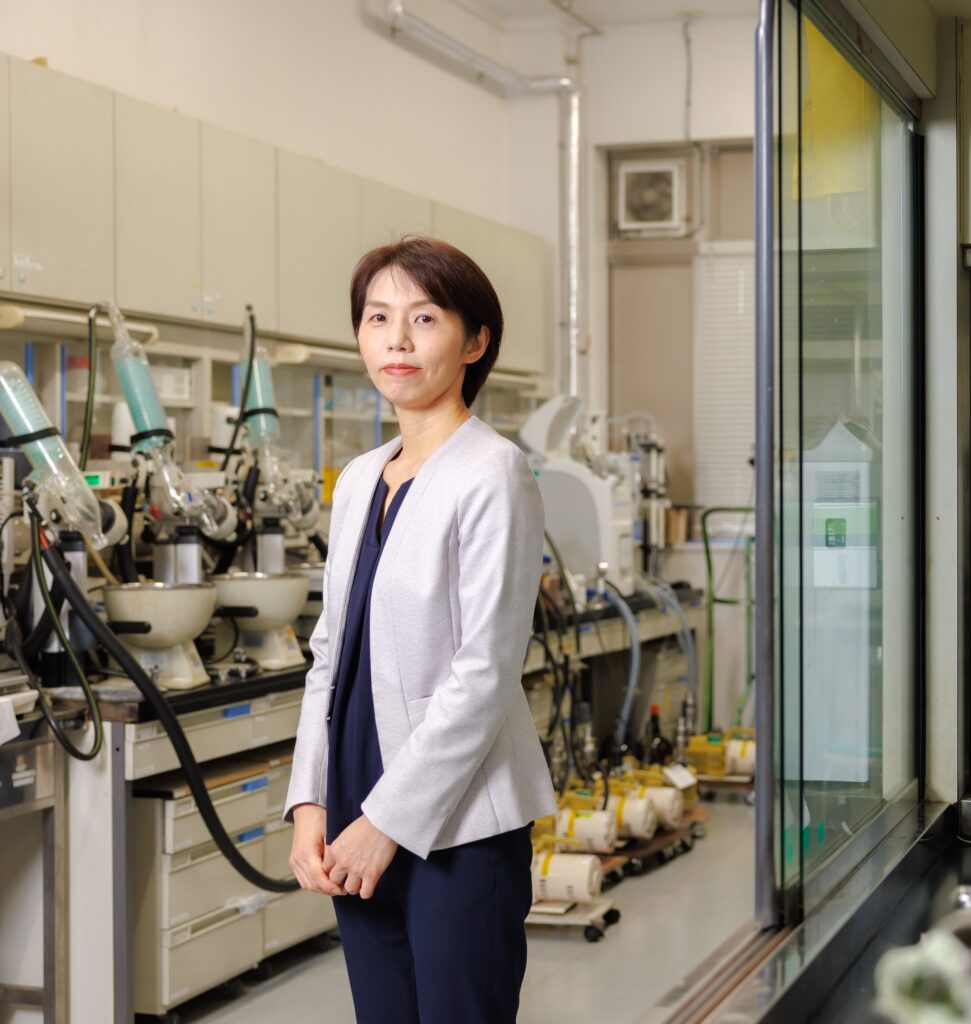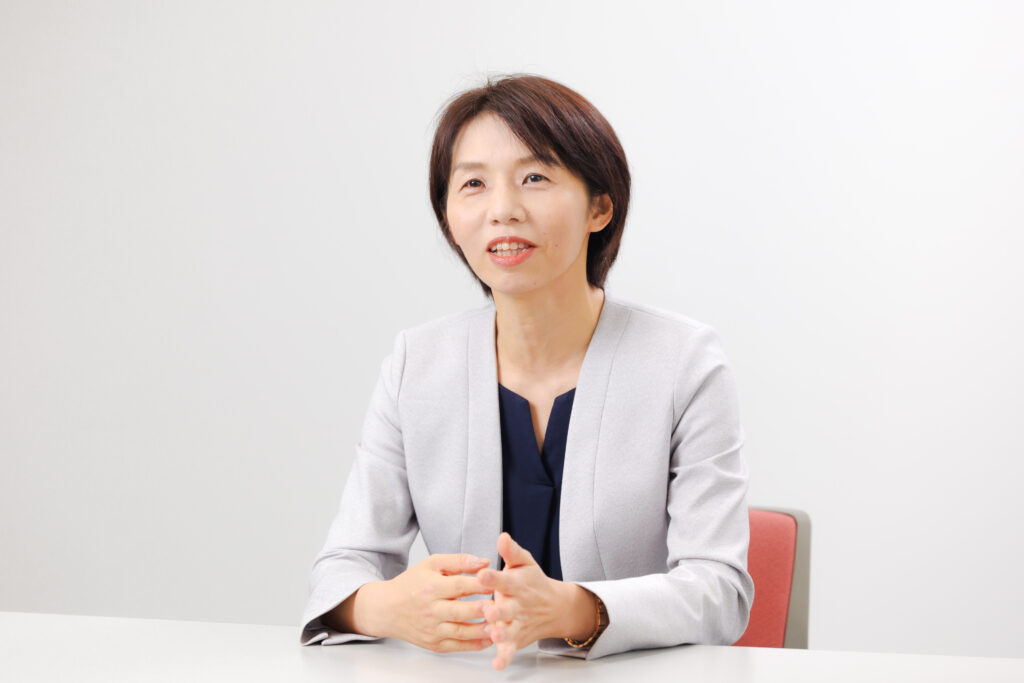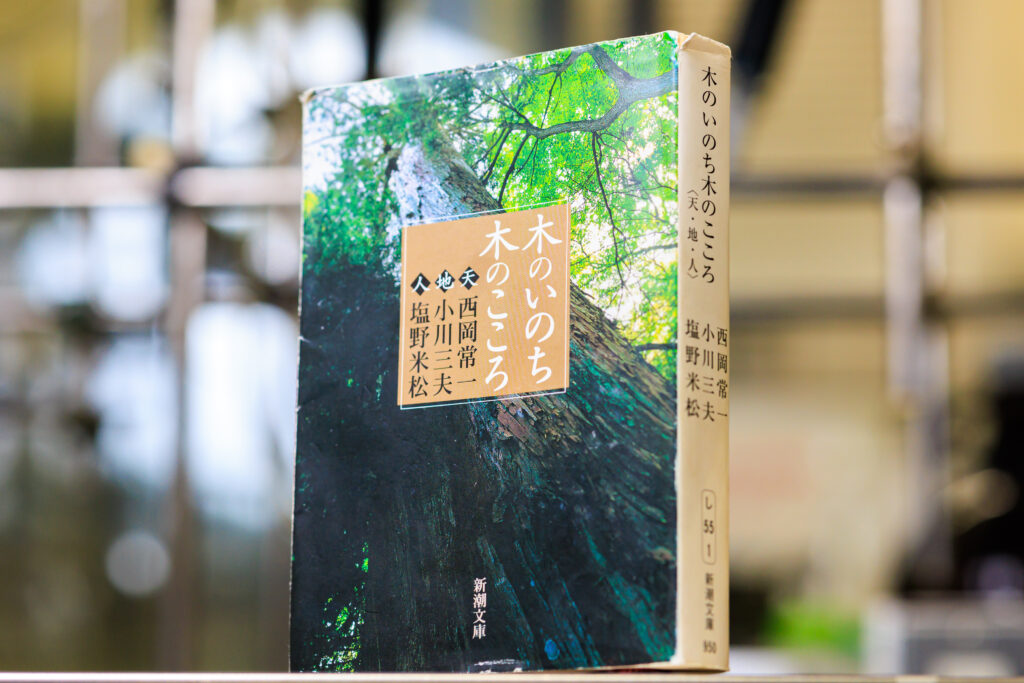
Professor Yuko Takeoka of the Faculty of Science and Technology specializes in materials development. She focuses on basic research into materials that will benefit our future—this includes the development of materials for perovskite solar cells, which have attracted the attention of the Nobel Prize in Chemistry, and research into biodegradable polymers, which are fully reassimilated into nature.
In recent years, perovskite solar cells have been suggested as a research theme worthy of the Nobel Prize in Chemistry. A perovskite is any material with a crystalline structure that can be represented by the formula ABX3. The perovskites used in solar cells are metal halides, which are lightweight and easy to process.
Perovskite solar cells already boast a power generation efficiency of more than 25%, and are thought to be on the cusp of real-world use; however, they still lack durability and stability. My research centers on perovskite compounds, one of the materials used in these solar cells—and, more particularly, on how to extend their lifespans and diversify their structures.
A wonder-material on which high hopes rest for next-generation solar cells

I first encountered perovskite compounds back in 1998, when I participated in a joint research project led by Emeritus Professor Kohei Sanui of Sophia University. In fact, it was in 2009—more than 10 years ago—that Tsutomu Miyasaka, Project Professor at Toin University of Yokohama, presented his paper on the topic. He is now considered to be a candidate for the Nobel Prize in Chemistry.
When I initially started my research, I was not aware that perovskites could be used in solar cells. Since I was using low-dimensional perovskite compounds to verify particular phenomena for quantum confinement, I did not look at the three-dimensional structures used in solar cells.
Having said that, it was via Doctor Kenjiro Tejima, a joint research project participant from Sophia University, that the solar cell expert Professor Miyasaka was introduced to perovskite compounds. Clearly, Sophia University has played a major role in perovskite solar cell research.
What is revolutionary about perovskite compounds is that they can be printed—or “painted”—onto the surfaces of various objects. Existing solar cells that use silicone or organic thin films require two types of semiconductor to be combined: a p-type semiconductor that produces a positive charge, and an n-type semiconductor that produces a negative charge. However, since perovskites are able to conduct both types of charge to their respective electrodes (ambipolar conduction), they are easy to manufacture—and this is a major benefit.
A further advantage is that CO2 emissions are significantly lower during the production process of perovskite solar cells. In the not-too-distant future, we may even be able to print perovskite solar cells onto PET bottles, and use them to generate electricity during picnics.
Using my research for a better future
However, it is worth noting that perovskite solar cells have some serious issues. First, they tend to react with moisture in the air and degrade. To overcome this, we are trying to increase the stability of perovskite solar cells by using two-dimensional perovskite compounds—which are far more stable; by adapting our production methods to enable electricity to flow more easily; and by creating a structure that is vertically self-supporting.
A second issue is that perovskite solar cells contain lead, which is harmful to humans. Researchers around the world are working hard to resolve this issue. While research into perovskite solar cells originated in Japan, it is increasing in popularity as a topic of research overseas as well.
My own research homes in on the fact that perovskite compounds are superb catalysts and luminescent materials; by giving them diverse functions, I am looking at ways they can be used outside of solar power generation.
Aside from perovskite compounds, I am also involved in research into biodegradable polymers. Biodegradable polymers that use plants as raw materials and can be reassimilated into the soil are a powerful ally in the battle against microplastics. I am working to develop a material that is tough, that degrades not only in soil but also in oceans and rivers, and that, in the end, is fully reassimilated into nature.
My goal as a researcher is to use my basic research into new materials to make the society of the future better.
The book I recommend
“Ki no Inochi Ki no Kokoro Ten Chi Jin”(The Life of Trees, the Heart of Trees: Heaven, Earth and Mankind)
by Tsunekazu Nishioka, Mitsuo Ogawa, and Yonematsu Shiono, Shinchosha

This book is a collection of oral histories of Tsunekazu Nishioka, a carpenter famed for his reconstruction of the Kondo (main hall) of Horyu-ji Temple, and his apprentices. I was overwhelmed by the methods and approaches they used in their work, the end-point of which lay many generations ahead. Turning their eyes to the future, the way they nurtured trees and utilized the characteristics of these trees has validity in research and education as well.
-
Yuko Takeoka
- Professor
Department of Materials and Life Sciences
Faculty of Science and Technology
- Professor
-
Professor Yuko Takeoka graduated from the Department of Chemistry, Faculty of Science and Technology at Sophia University; she received a Ph.D. in engineering from the University of Tokyo. After working as an associate professor at the Sophia University, she assumed her current position in 2018.
- Department of Materials and Life Sciences
Interviewed: June 2022